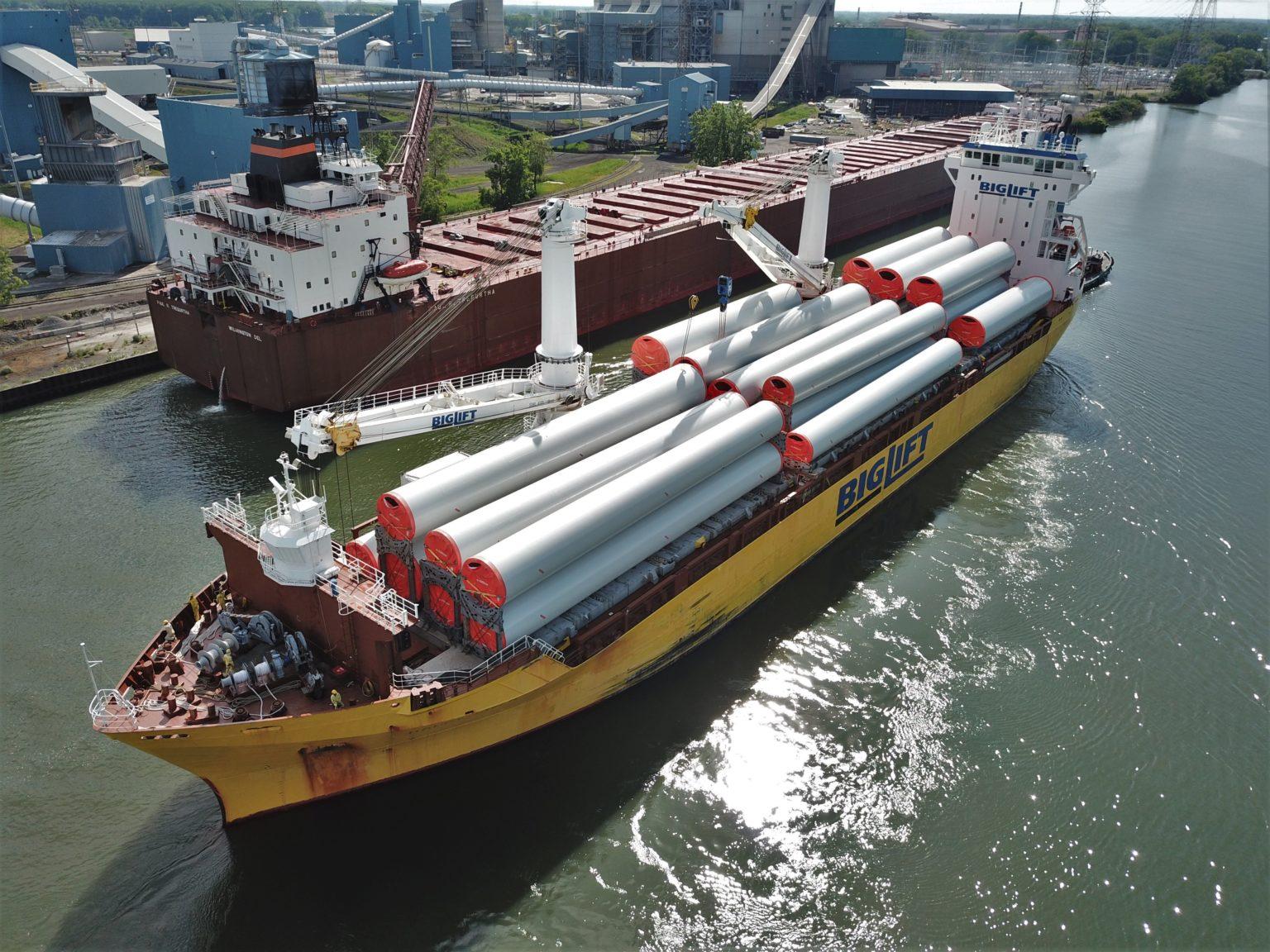
Great Lakes-St. Lawrence shipping has demonstrated for many years that it is a safe ‘port in a storm’. The Chamber of Marine Commerce’s proposals will support an innovative, safe and environmentally smart future for Canada and the U.S.
It is often said, that it takes a crisis to truly test your mettle. During the past seven months, the Great Lakes-St. Lawrence shipping sector has more than proven its ability to adapt quickly, innovate and successfully partner with governments to keep supply chains operating while protecting our people and the public.
Virtually overnight, our industry associations, ports, the St. Lawrence Seaway, ship operators and suppliers collectively reinvented workplace safety and operations, contributed to sweeping policy changes and navigated unprecedented cross-border, state/provincial and international border closures.

Bruce R. Burrows
Despite these challenges, our bi-national transportation corridor has continued to safely, and efficiently move goods without interruption — ensuring our citizens and businesses have the essential food, fuel, power, and materials to keep going during one of the worst health and economic crises in modern history.
The pandemic is far from over, but as governments develop their “what next” plans for economic stimulus, Great Lakes-St. Lawrence shipping is ready and able to help Canada and the United States reinvigorate trade, rebuild industries and return millions of people back to work.
Great Lakes-St. Lawrence shipping has long been vital to the success of the agricultural, manufacturing, mining, construction and energy sectors. It annually transports more than U.S.$77 billion (CDN$100 billion) worth of goods and supports hundreds of thousands of jobs. Marine also offers critical public interest benefits as the safest and most fuel and carbon efficient transportation mode.
With this in mind, the Chamber has created a Marine Economic Recovery Plan, with the input of our members, that we are now promoting to Canadian federal politicians, officials, and stakeholders to help inform and contribute to policymaking for the country’s economic recovery.
At the same time, our Washington representative has been meeting with Great Lakes members of U.S. Congress to advocate for the need for COVID 19 relief funding and marine infrastructure investment, as economic stimulus measures continue to be debated in the House and Senate.
Our efforts in both countries are aimed at working in partnership with government to build upon marine transportation’s significant environmental and safety advantages, and at the same time create jobs and boost trade potential.
In Canada, the proposals in our plan take a prudent approach, targeting existing government programs which can either be adapted or re-funded.
For example, the federal government’s National Trade Corridors Fund has been critical for many Canadian port infrastructure projects to move ahead and act as a catalyst for attracting matching private investment, diversifying cargo and expanding markets for surrounding businesses. We have asked for this program to be continued and for new funding to be allocated.
The Government of Canada has previously announced its intention to support efforts that develop marine infrastructure and convert ships from burning heavy oil and diesel toward more environmentally-conscious fuels, like liquefied natural gas (LNG). Our members have invested huge resources into new technologies and alternative fuels over the last decade to reduce GHGs and air emissions. But like our customers, marine shipping is now in a period of economic contraction.
We believe that there are significant opportunities for the government to help continue this good work by funding R&D projects and technologies to expand the use of alternative fuels. Ultimately, alternative propulsion systems that have zero carbon emissions will be needed in order to meet international and Canadian long-term goals. With no such systems available for large commercial vessels, industry-government collaboration and leadership will be essential to take this technology to the next level.
On the climate resiliency front, the Transportation Assets Risk Assessment (TARA) program in Canada provided funding to assess the impacts of the changing climate on federally-owned transportation assets such as bridges, ports and airports. We are now advocating that this program be continued but repurposed to fund infrastructure projects designed to mitigate the climactic risks identified by the original program.
Other proposals include awarding some projects planned through the National Shipbuilding Strategy for renewing Coast Guard and naval assets to shipyards in the Great Lakes region; R&D focused on discovering better ballast water treatment measures; and continuing the modernization of navigational technology and services provided by the Coast Guard and the St. Lawrence Seaway.
In the United States, the Chamber continues to support ongoing funding for the Maritime Administration’s (MARAD) Port Infrastructure Development Program, which provides grants for port infrastructure, and intermodal and technology improvements. These projects create immediate jobs, facilitate international trade and will be crucial to the future reliability and efficiency of American supply chains.
The CMC also supports the Maritime Transportation System Emergency Relief Act(MTSERA), whose program authorization was passed by the House this summer, which would help ports mitigate lost revenue streams from the pandemic (such as cancelled cruise business and lower port fees) by allowing MARAD to provide emergency federal grants to ports.
The grants could pay for ports’ operating and overhead costs such as sanitizing, staffing, workforce retention, paid leave, procurement of protective health equipment, debt service payments among other essential needs. The Senate has introduced a companion bill of the same title and Senator Jeff Merkley (D-OR) will be looking to pass MTSERA in the next COVID-19 package while also advocating for a direct appropriation to MARAD.
With second pandemic waves upon us, the pace of recovery for the marine industry and the wider economy remains uncertain. Governments are faced with difficult choices on which stimulus measures will be most effective in unprecedented times. Now more than ever, they will need reliable, smart initiatives that meet multiple objectives and do the greatest amount of good.
Great Lakes-St. Lawrence shipping has demonstrated for many years that it is a safe ‘port in a storm’. We believe these proposals will help strengthen the supply chain, support the success of multiple industry/user sectors and set up Canada and the United States for an innovative, safe, efficient and environmentally smart future.